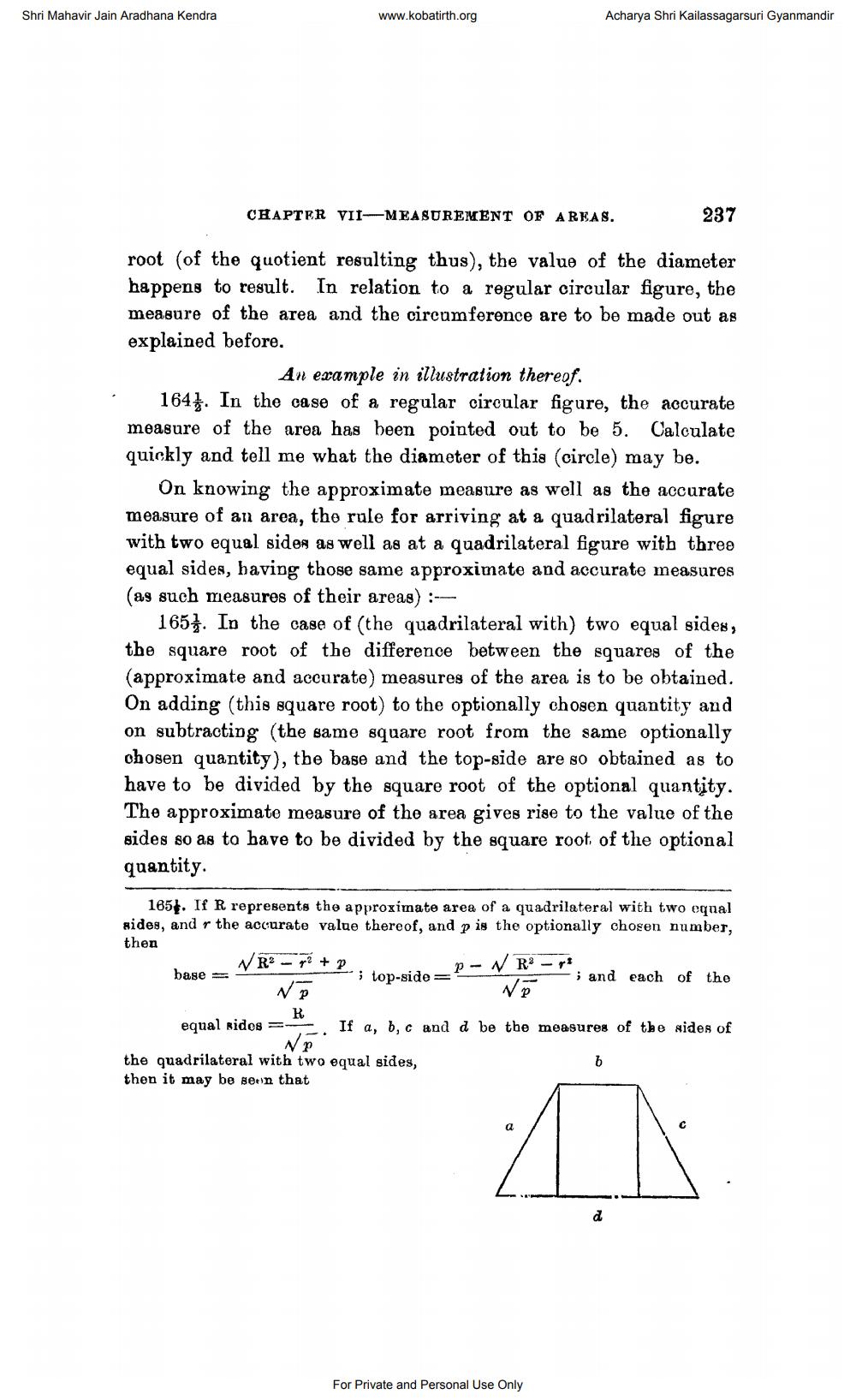________________
Shri Mahavir Jain Aradhana Kendra
www.kobatirth.org
Acharya Shri Kailassagarsuri Gyanmandir
CHAPTER VII-MEASUREMENT OF AREAS.
237
root (of the quotient resulting thus), the value of the diameter happens to result. In relation to a regular circular figure, the measure of the area and the circumference are to be made out as explained before.
An example in illustration thereof. 164}. In the case of a regular circular figure, the accurate measure of the area has been pointed out to be 5. Calculate quickly and tell me what the diameter of this (circle) may be.
On knowing the approximate measure as well as the accurate measure of an area, the rule for arriving at a quadrilateral figure with two equal sides as well as at a quadrilateral figure with three equal sides, having those same approximate and accurate measures (as such measures of their areas) :
1651. In the case of (the quadrilateral with) two equal sides, the square root of the difference between the squares of the (approximate and accurate measures of the area is to be obtained. On adding (this square root) to the optionally chosen quantity and on subtracting (the same square root from the same optionally chosen quantity), the base and the top-side are so obtained as to have to be divided by the square root of the optional quantity. The approximate measure of the area gives rise to the value of the sides so as to have to be divided by the square root of the optional quantity.
- NRP - pt
i top-side
165]. If R represents the approximate area of a quadrilateral with two equal sides, and r the accurate value thereof, and p is the optionally chosen number, then
WR? - q? + P.. base =
i and each of the Në
Np equal rides =- . If a, b, c and d be the measures of the sides of
NP the quadrilateral with two equal sides, then it may be seen that
R
AN
For Private and Personal Use Only




